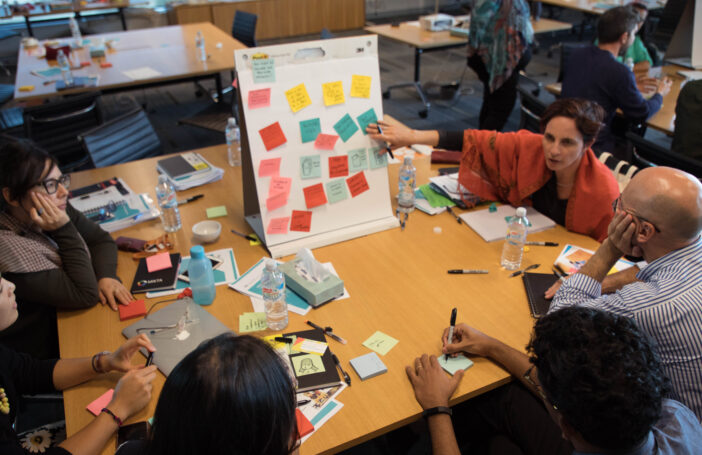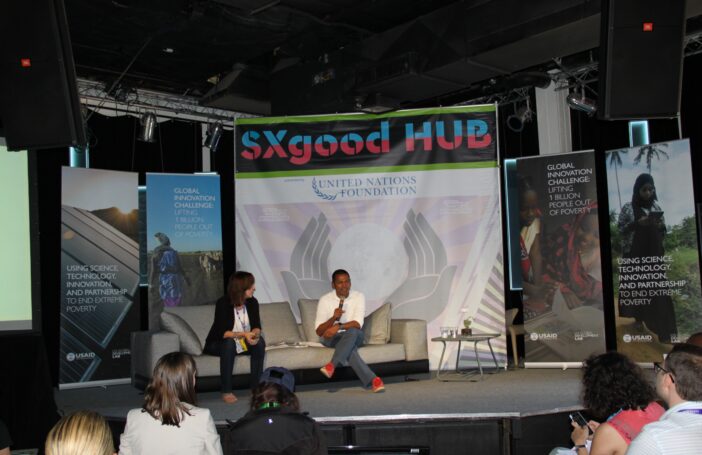There has been a great deal of commentary on the new Australian aid policy, including through the Development Policy Centre (see here). While critiques vary, it is our belief that at least one aspect of the new policy should be viewed with positive enthusiasm – innovation.
Although the concept of innovation brings much fanfare and excitement, we argue that it is important to understand and target innovation in all its possible manifestations, not just to search for the next ‘light bulb moment’.
Forms of innovation are often typologised into disruptive/radical or incremental, and both forms may be transformative in the long term. More radical and disruptive innovation is often associated with a Schumpterian view of innovation. This is where innovation occurs as ‘gales of creative destruction’ – as one mode of operating is made redundant by another. We may think of the move from steam to electric engines, or from cassette tapes to CDs to MP3. Radical or disruptive innovation often involves the creation of new products and services that create or transform markets.
Other innovation, arguably the bulk that occurs, is incremental by comparison. This is often linked to a Kirznier view of innovation, whereby entrepreneurs, alert to opportunities and ideas in other sectors of industries, apply them in a new domain. This innovation may also take the form of recombining existing resources and materials to come up with new solutions. We also know this process as a form of ‘bricolage’ – making use of what is around you to solve a problem (the 1980s television character MacGyver is the epitome of a bricoleur!).
Significant innovation is not only technologically based (in the form of new products or production processes) but organisational. Based at the University of California, Berkeley, Professor Henry Chesborough’s work suggests that business model innovation will be as important as technological innovation in the coming decade. We see evidence of this in the widespread use and adoption of strategy tools created by Alexanader Osterwalder, such as the business model canvas. The focus here is on the way that value can be created and captured by how a business is organised (i.e. its model).
Another shift in the conceptualisation of how innovation occurs (or can be stimulated), often at a firm and organisational level, is from closed to open innovation. Traditional approaches to innovation have relied on an organisation’s own internal resources, a focus on building intellectual property and fighting against competitors free-riding. In contrast, open innovation involves the deliberate import and export of knowledge by an organisation in order to accelerate and enhance its innovation. The motivating idea is that exchanging ideas openly is likely to develop better products more quickly than the internal, closed approach. Speedier and superior products are what is needed to keep ahead of the competition, not obsessive secrecy.
Open innovation may be approached in a variety of ways. One popular method is the crowd sourcing of ideas and co-creating with consumers. The T-Shirt design company Threadless the and car manufacturer Local Motors (which now designs and manufactures for the US military) are examples of this (and also of business model innovation). They rely on a community of designers to co-create new products, while managing the platforms and processes by which they create value. Sure, designing and selling t-shirts may not be considered particularly innovative, but the business models and open innovation approach of these firms is creating and capturing significant value. Rethinking how innovation occurs and leveraging IP in new ways, to create and capture value is also seen by Telsa’s recent decision to no longer protect its patents for electric cars. They believe that such an approach will disrupt the large automotive industry and accelerate the advent of sustainable transport, Telsa’s initial goal.
In this space of open innovation, we also see significant attention being paid to the process of Design Thinking. Popularised by the design firm IDEO, this is a human-centred problem-solving process that blends anthropological concerns and a start-up mentality (in learning and failing quickly). For organisations, it is a discipline that uses the designer’s sensibility and methods to match people’s needs with what is technologically feasible and what a viable business strategy can convert into customer value and market opportunity. It is an iterative problem solving process, that moves through stages of developing empathy, defining the problem, ideating, prototyping and testing. Such a model is at the heart of Stanford’s D-School and social innovation subjects in their business school, and is already leading to new products and solutions for economic and social development. One now famous example is D-Light,which emerged from classes on Entrepreneurial Design for Extreme Affordability.
IDEO has already taken this process into its open online platform, OpenIDEO, where it takes up development challenges and seeks expertise from community participants from all over the world. Here, the same five stage design thinking process is managed by IDEO staff, and participation is completely open. It is essentially a global platform that pulls people together to develop solutions to social problems throughout the world. Challenges may be suggested by the community, and are sponsored by global organisations, donor agencies or large corporations. Some current examples include:
- “How might we build better employment opportunities and pathways for young people around the world?” – sponsored by the Clinton Global Initiative.
- “How might we make low-income urban areas safer and more empowering for women and girls?” – sponsored by UKAid.
- “How might we improve maternal health with mobile technologies for low-income countries?” – sponsored by Oxfam and Nokia.
In Part Two of this series we will discuss what this mean might for us now, in the context of the existing Australian aid program, with ongoing activities, framed by a new aid policy and a stated appetite for innovation.
Danielle Logue coordinates the UTS Business School MBA program on innovation and entrepreneurship, and is Visiting Fellow, Skoll Centre for Social Entrepreneurship, University of Oxford. Mel Dunn is Vice President International Development for URS Australia, and Adjunct Associate Professor, School of Political Science and International Studies, University of Queensland.





